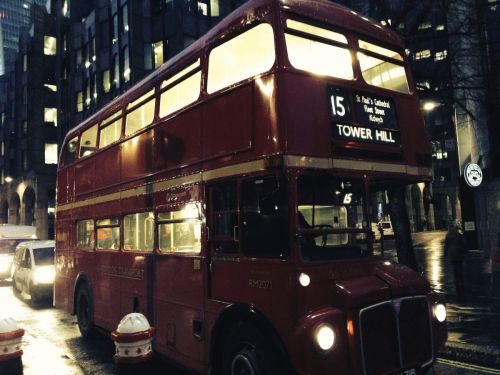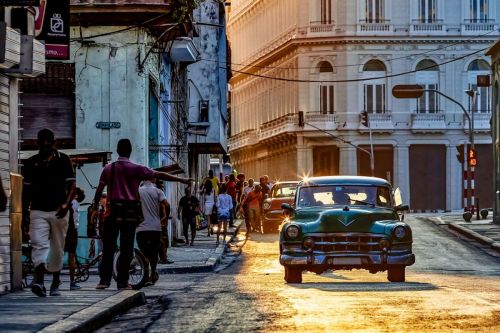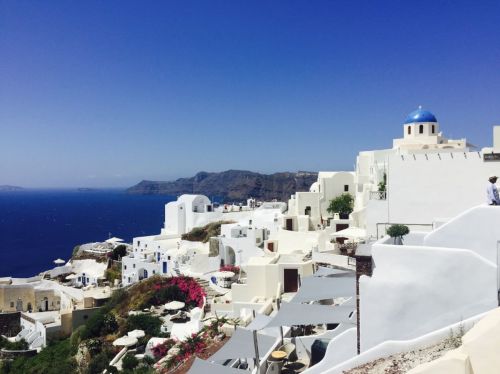The Faroe Islands are one of the three countries of the Kingdom of Denmark, along with mainland Denmark and Greenland. The head of state is Denmark’s Queen Margrethe II.
The islands have their parliament, their representatives in the Danish parliament, and their flag. They are considered a “nation within a commonwealth with Denmark.”
Unlike Denmark, the Faroe Islands are not a member of the European Union or the Schengen Area.
The Faroe Islands are an archipelago home to Faroese-speaking people. They are islands with beautiful landscapes, original wildlife, and interesting customs.
They are located in the northern part of the Atlantic Ocean between Great Britain, Iceland, and Norway.
The islands form a south-facing triangle and are 118 kilometers long and 75 kilometers wide. The coastline stretches for 1289 kilometers.
The average altitude is 300 meters above sea level. Almost the entire archipelago is crisscrossed by numerous mountain ranges, in which there are about 340 peaks. Of these, 10 reach heights of more than 800 meters above sea level, and seven are lower than 150 meters above sea level. The highest mountain is Slættaratindur (882 meters above sea level). On a clear day, you can see all the islands of the archipelago from its summit. The lowest mountain is Høganes (115 meters above sea level).
The northernmost tip of the island is Cape Enniberg, home to Europe’s highest coastal cliff (754 meters). It is one of the world's highest cliffs (the highest at 1010 meters above sea level is in Hawaii), but it is the only one that is vertical.
The southernmost tip of the Faroe Islands is the Sumbiarsteinur rock.
The largest of these is Streymoy, with an area of 374.3 square kilometers, which is home to almost half of the Faroes population. The smallest inhabited island is Koltur. It has an area of 2.5 square kilometers.
Located in the central part of the archipelago, it has an area of 373.5 square kilometers and is home to nearly 22.000 people. Translated from Faroese (the language of the Faroese population), the island’s name means Island of News or Island of Currents.
Streymoy has the highest number of peaks in the archipelago. There are 72 of them, the highest of which is Kopsenni measuring 789 meters above sea level, located in the northwestern part of the island. Other hills are concentrated in this area, forming cliff shores with numerous caves inhabited by seabirds. The southern part of the island is much lower, and the central part is crisscrossed by glacial valleys.
Temperatures there do not particularly vary on an annual basis. Winters are usually warm, with an average temperature in January of +3 to +4 degrees Celsius. In the warmest month, which is considered July, the average temperature is +12 degrees Celsius.
The Faroe Islands are one of the most rain-prone places in the - it rains there an average of 280 days a year. Rainfall is often accompanied by very strong winds, which influence the formation of clouds that accompany islanders most days of the year. Clouds in the Faroe Islands usually form very low, often reaching the ground, or the Atlantic Ocean. The Faroese (residents of the Faroe Islands) distinguish between several types of fog, forming when there is a particular cloud cover. The most dangerous type of fog is Mjørki, which covers everything from mountain tops to the sea.
There is no acid rain and the air is free of pollution.
Around 22nd June, the day lasts about 20 hours, followed by a so-called white night. This is a cyclic astronomical phenomenon occurring at high latitudes (above 57 degrees N or S), whereby no complete darkness falls at night. Dusk passes directly into dawn.
The shortest day of the year there lasts about 5 hours.
They flow from mountain springs or sparse lakes. The area of the 10 largest lakes in the Faroe Islands is 7.19 square kilometers, and their total area is 0.5 percent of that of the entire archipelago.
It is dominated by dune vegetation, greases, mosses, and peat bogs, and shrubs grow only in secluded places by lakes. The bogs are exploited and used for fuel.
For at least a century, attempts have been made to plant trees there to reforest the island. In 2005, the Faroe Islands reported 100 hectares of forest cover according to UN criteria, spread across 19 forests, This represents only 0.7 per mille of the total area. These forests are mainly coniferous trees: spruce, pine, and larch, but also deciduous trees such as maples, alders, and birches.
Due to the isolated, insular nature of the Faroe Islands, some animal species do not occur there naturally, such as reptiles, amphibians, and freshwater fish. Mammals are represented only by gray seals.
Impressive is only the world of birds, whose population is estimated at 3.5 million individuals. They are represented by about 40 species of nesting birds, 30 migrating birds, and more than 200 visiting the islands during migration.
Colonies of puffins-water birds of the auk family (Alcidae)-are very numerous here. A wading bird of the oystercatcher family (Haematopodidae), the Eurasian oystercatcher, which is the national bird of the Faroe Islands, was immortalized on the country’s former flag until 1940.
The Faroe Islands are home to what is probably the world's largest colony of the European storm petrel (Hydrobates pelagicus), numbering between 150.000 and 400.000 pairs. In the past, sailors called these birds unlucky, storm-creating birds. They believed that they were the souls of drowned sailors and one should have a good relationship with them.
They were formed as a result of so-called linear eruptions, involving lava spouts from very long, straight fissures. They are mainly composed of basalts interspersed with softer layers of tuff.
In the 1990s, wasps appeared there, which probably came to the island by ship. It is said that the appearance of wasps caused fear among the locals (it was similar in Iceland).
The dominant insect in the archipelago is the moth (Hepialus humuli), which has also adorned the 200-crown banknote since 2004.
They came to the islands in the 7th century, and when the Vikings arrived there in the 9th century, they moved to Iceland. In 1035 the Faroe Islands became the property of Norway, with which they were annexed to Denmark in 1380.
In 1814, Denmark lost Norway but retained the Faroe Islands. The islands gained limited autonomy in the 19th century. The written language of the people there, Faroese, was isolated and is now, along with Danish, the official language of the Faroe Islands.
Between 1940 and 1945, the archipelago, as a strategic point in the Battle of the Atlantic, was occupied by the British army. In 1948, new terms of interdependence were signed between the Faroe Islands and Denmark, according to which the Faroe Islands gained broader autonomy.
Of the 49.000 people living on the islands, Farer people make up the majority. Icelanders are the largest group of foreigners there, followed by Norwegians, Filipinos, Thais, and British. In total, people from 77 countries live on the islands.
It is assumed that the Faroese are one of the most genetically homogeneous peoples in the North Atlantic. The Faroese Genetics Biobank, established there in 2005, has been running the FarGen project since 2011, which allows scientists to study how genes, environment, and lifestyle affect the health of Faroese people.
It is derived from Old Norse and is one of the smallest Germanic languages.
The islands were Christianized in 999 by Sigmundur Brestisson (the Faroese Viking chief who initiated Christianization). About 80 percent of the population are adherents of the Evangelical Lutheran State Church.
Almost all use landline telephony. The first telephone line was established there in 1905, and in 1930 all towns on the islands were connected to the telephone network. Today the Faroe Islands are connected to the world by two fiber-optic cables.
The telephone network has been completely digitized since 1998, and there is a comprehensive GSM network for mobile telephony.
The fishing zone of the Faroe Islands is 200 nautical miles. In the North Atlantic, the islands are the fifth-largest fishing nation (ranked 25th in the world).
The number of sheep in the archipelago is strictly regulated by regulations dating back to the 13th century (the Sheep Letter-the oldest known Faroese document, written on 24th July 1298, which says, among other things, that wool is Faroese gold) and must be within 75-78 thousand. Sheep have priority on the road there. A specially established police unit deals with car accidents involving sheep. There is even special car insurance against accidents involving sheep.
Faroers have their measure of area, 1 mørk, meaning an area that can feed 32 sheep.
The sheep’s wool, which comes from the islands, has unique qualities (it contains a lot of lanolin), and the meat has a taste appreciated by gourmets.
It is a 220-meter bridge connecting the archipelago’s two largest and most populous islands, Streymoy in the west and Eysturoy in the east, through the Sundini Strait at its narrowest point. It is often referred to as the Bridge over the Atlantic.
The traditional hunt, called grindadráp, is a Faroese tradition dating back to Viking times. It involves chasing long-finned pilot whales deep into the bay with boats and killing them with harpoons. This cruel event takes place every year during July and August. Entire families, even small children, participate. Between 600 and 1000 long-finned pilot whales are killed each year (the infamous record is 1400 long-finned pilot whales).
This is not for economic reasons, as it was centuries ago, but only for tradition. The killing of long-finned pilot whales has sparked outrage around the world. Recently, a compromise has been reached that no more than 500 may be killed.
It is located on the east coast of the archipelago’s largest island, Streymoy. With a population of 13.911, the city is usually referred to as Havn. It is the largest city and municipality of the Faroe Islands and the cultural, economic, and transportation center of the country.
The city’s name means the port of Thor and was given in honor of the god of lighting from Norse mythology. The city’s coat of arms depicts Thor’s hammer- Mjølner-and refers to the city’s origins in the pre-Christian Viking Age. The first written mention of Thorshavn dates back to 1075, which is why the city is considered one of the oldest capitals in northern Europe.
Thorshavn is the most important port in the Faroe Islands. The capital is home to the islands’ only university, the University of the Faroes, founded in 1960, the National Archives, the National Library, and many other institutions and monuments.
It is operated by the only indigenous Faroese airline, Atlantic Airways. The airport has a 1799-meter-long asphalt airstrip.
To improve its operation and facilitate transportation to the archipelago’s capital, a tunnel was built between Vagar Island and Streymoy, which is named Vagatunnilin and is more than 4.5 kilometers long.












